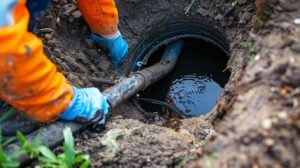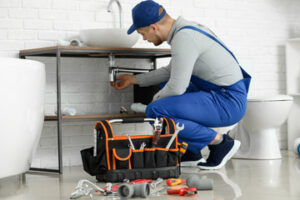Liquid Waste Disposal Perth involves the proper disposal of liquid wastes. This includes grit trap waste, grease trap pumpings, septic tank pumpings, domestic septage and chemical toilet waste, municipal wastewater treatment plant sludge, and water-supply treatment plant sludge.

When improperly disposed, this type of waste can soak into the soil and water, contaminating it for long-term damage. To avoid this, businesses should practice proper disposal methods.
There are a variety of liquid waste disposal options, depending on the type of material. Some of these options include chemical treatment, which involves adding chemicals to the waste to neutralize pathogens, and incineration, which is used for some bodily fluids and dialysis wastes. Some facilities also use a sterilization process known as autoclaving, which heats the waste to high temperatures and destroys the microorganisms. Other liquid waste disposal methods include landfilling, composting, and converting it to biosolids for agricultural use. These processes are environmentally sustainable and can lower your business’s waste management costs.
If your business generates a lot of liquid waste, you should consider investing in a proper disposal system. It should be able to handle large volumes and minimize risk of spills or leaks. You should also invest in appropriate containers, which are sealed and made from durable materials such as High-Density Polyethylene (HDPE) or Stainless Steel. You can also select special jars and bottles designed for liquid waste.
Liquid waste disposal is an important aspect of any industrial business. It can contain harmful chemicals or biological agents that can pollute environments if it is not contained properly. Some types of liquid waste can be dangerous even if they are not leaking or spilling, such as paint thinners and solvents, expired medications, and contaminated soil.
One of the most effective ways to dispose of liquid waste is by recycling it within your business. This can be done through waste water reuse, reducing the amount of wastewater you produce. You can also use solar evaporation ponds to evaporate the liquid and reduce the volume of waste. You should also try to reduce the quantity of waste that your business produces through process optimisation and efficient equipment maintenance.
It is important to follow local rules and regulations regarding the disposal of liquid waste. It is also essential to train your employees on proper waste handling procedures and protocols. You should also keep up-to-date with changes in regulations, and make sure that your staff follows these rules. This will help to avoid fines and penalties.
Environmental Regulations
When it comes to contaminated liquid waste, environmental regulations are strict. This is because hazardous wastes have a high risk of polluting the environment if not properly managed. Therefore, the EPA requires that any liquid waste that is transported or handled be stored in containers that can prevent leaks or spills. In addition, regulated waste generators are required to keep detailed records of their waste, including its origin, composition and final destination. This information is used to verify that waste is being disposed of in accordance with EPA regulations.
Liquid wastes may be treated with solvents or other chemical agents to neutralize its toxicity and make it safe for transport and disposal. However, the treatment must be done in a TSDF that is certified to handle hazardous waste. In order to qualify, a TSDF must have the ability to incinerate contaminated liquid waste and treat it for discharge to surface water or groundwater. Alternatively, a TSDF may be able to recycle the waste into other products.
In some cases, a TSDF can also use heat and steam to convert liquid wastes into a solid that is safe for landfill disposal. This is an option for certain hazardous wastes, such as oily wastewater or sludge from industrial operations. In these cases, the TSDF can also perform a risk assessment to determine whether a particular process is safe for the waste.
Biological waste can be considered non-biohazardous/non-infectious once it is autoclaved or chemically disinfected by the Biological Safety Office and has been validated to meet the decontamination requirements. Otherwise, it must be disposed of as biohazardous/infectious waste.
The EPA has a contained-in policy that allows contaminated environmental media to be regulated as hazardous waste if they contain concentrations of certain hazardous constituents from listed hazardous waste at levels above health-based levels. However, the EPA Region or authorized State overseeing the cleanup of the media must decide when the level of contamination no longer poses a threat sufficient to warrant RCRA regulation.
The EPA lists 28 different types of wastes as F-listed, which includes spent solvents from wood preserving, petroleum manufacturing, and metal finishing processes, as well as liquid run-off from hazardous waste landfills. Additionally, the EPA lists more than 100 wastes as K-listed, which include a wide range of industrial chemicals, inks, pigments, explosives and pesticides.
Costs
Liquid waste disposal is a costly process. However, effective disposal of liquid waste can reduce costs and improve environmental health. Proper disposal helps to prevent the contamination of water bodies and soil, protects public health, and ensures compliance with environmental regulations. It also prevents the spread of diseases and harmful bacteria.
The cost of liquid waste disposal depends on the type of waste material and its disposal method. Waste management companies can help you choose the best disposal option for your needs. They can also provide a detailed report on their services. The report can include information on the company’s waste disposal methods, storage tanks, and emergency response plans.
Using the right treatment technology is essential for sustainable liquid waste management. This allows for the reuse and recycling of water and other materials, reducing the demand on natural water bodies. It also helps to conserve energy and reduce carbon emissions.
The use of superabsorbent polymers (SAPs) for liquid-bearing wastes and contaminated sediments is one of the most cost-effective ways to manage these materials. This technology rapidly solidifies chemical and biological wastes, preventing potentially harmful fluids from transporting contaminants into waterways and groundwater aquifers. This can save you significant capital expenditures on excavation, transportation, and landfill costs.
Another way to reduce costs is to minimize the volume of waste. This can be achieved by utilising a high-density SAP, which requires a lower dosage of reagent than other absorbents. This lower dosage results in a reduced waste volume and a substantial savings on disposal fees.
In addition to reducing the amount of waste, it is important to dispose of hazardous chemicals properly. This is especially true if you are working near water sources, as the chemicals can be leached into the water and cause significant damage to the environment.
Liquid waste disposal is essential for a healthy environment. It helps to prevent pollution, and promotes economic sustainability. It also promotes a sense of responsibility among citizens. Local initiatives, such as cleaning rivers and lakes, can help to raise awareness of this issue. In addition to these initiatives, businesses should ensure that they follow environmental regulations and comply with local laws.
Compliance
Whether you’re dealing with hazardous or non-hazardous liquid waste, proper disposal is critical to protect the environment. Liquid waste disposal systems must adhere to strict regulations that may include a variety of complex documentation and record-keeping. Non-compliance can result in costly fines and reputational damage. Businesses can improve their compliance with regulations by evaluating their current waste management systems and upgrading them as necessary.
A comprehensive waste disposal system requires careful financial planning, particularly for initial setup and ongoing maintenance costs. However, the payoff is considerable for companies that are in compliance with local, state, and federal environmental standards. This helps to minimize soil contamination, which can have long-term negative impacts on the environment and surrounding communities.
Depending on the type of liquid waste you generate, there are several options for disposal, including chemical treatment and incineration. Both methods destroy the harmful pathogens and other contaminants in the waste, and can save you money over time.
Hazardous waste disposal containers must be labeled clearly and correctly. They must also be sealed properly, preventing the spillage of chemicals into the environment. In addition, different classes of chemicals should not be commingled. This can cause unwanted, dangerous reactions that are difficult to detect and clean up.
In order to avoid violations, you must keep track of all generated waste and make sure that any new waste you create has been evaluated by EHS for its classification. It’s important to notify EHS as soon as you begin producing any new waste that hasn’t previously been evaluated for classification. This ensures that you’re following all applicable management and storage time limit requirements for the specific type of waste you’re creating.
Medical facilities – especially hospitals – generate large quantities of liquid medical waste. This is a highly-regulated type of waste that must be carefully segregated based on its type and handled using specialized treatment methods. Licensed medical waste disposal providers can help to ensure that all of your liquid medical waste is treated and disposed of in compliance with regulations.
Any container of liquid waste must be properly labelled to avoid violations. The labels must clearly identify the contents of each container, its hazard classification, and the site that generated the waste. They must also be able to withstand normal handling and storage conditions. In addition, any containers that aren’t in good condition must be discarded.
